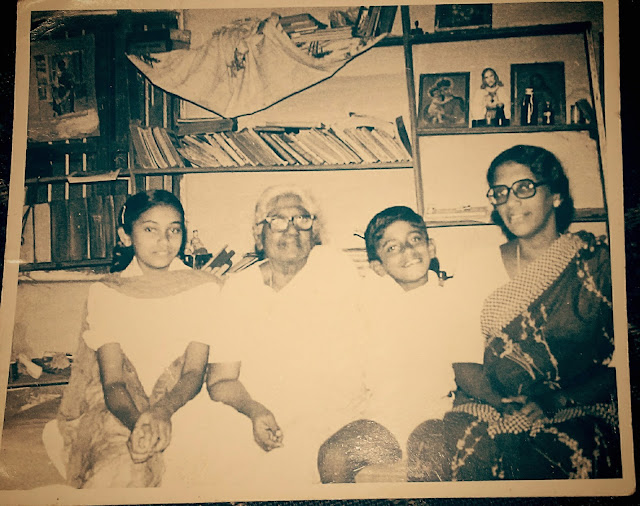 |
A file photo of Mercy Paul, the first woman doctor of Coimbatore, with her daughter Primela Mary and grand children |
Sadagopachari, a son of an orthodox
Jeeyar ( A preacher of
Vaishnavism) of Tirunelveli, one day, became Arthur Paul!. Had
the man, who pursued education in the famed St. Joseph's College,
Trichy in the 19th century, not
embraced Christianity, Coimbatore could not have seen its first woman
doctor Mercy Paul, who was none other than his daughter.
“ Because, in
the orthodox Hindu society, girls had little opportunity to pursue
even formal school education. My grandfather Sadagopachari was even
driven out of home after he embraced Christianity ” recalls 70 year
old Primela Mary, a retired physics teacher from G.R.G.Matriculation
Hr.Sec.School and the daughter of Coimbatore's first woman doctor.
Primela Mary was also a recipient of Dr. Radhakrishnan
state award for the
best teacher.
Mercy Paul, who
was born in 1905, came to Coimbatore around 1929 as an L.M.P (
Licentiate Medical Practitioner, since there was no M.B.B.S then).
Fondly called as
'Paul Doctoramma' by the then Coimbatoreans, Mercy Paul pursued her
education in the Christian Medical College and Hospital, Vellore,
under its founder Dr. Ida.S. Scudder, an American medical
missionary-turned physician, who championed the cause of women by
founding the exclusive medical school for girls.
Reminding
Portia's quote The quality of mercy is not strained ...
from
William Shakespeare's play The
Merchant of Venice,
Mercy's love for mankind made
her serve and save the people from plague when the city witnessed
the outbreak of the deadly disease.
Nonetheless, the
physician, who saved hundreds of human lives from the jaws of death,
could not get a chance even to pay the last rites to her father
Arthur Paul when he passed away in Guntur, Andhra Pradesh, as there
was little transport facility in the past.
An
inconsolable woman, when she later decided to leave Coimbatore, it
was Diwan Bahadur C.S. Rathina Sabhapathy Mudaliar, the municipal
chairman of Coimbatore, advised her to continue her service here”
recalls Primela.
In contrast to
the modern age, where most corporate hospitals cheat and fleece
patients, Paul doctoramma was devoted to serve people and demanded no
fees from them.
“I
remember an occasion when some parents rushed their child to our
home, saying that it had swallowed a coin. However, within a few
minutes I could see them shed tears of joy and look up to my mother
after she removed the foreign object from the little one's stomach.
Though my mother served in the municipal hospitals of Coimbatore,
which were called Solakada Mukku Aaspathiri
and Devangapettai Aaspathiri,
she never loved a luxurious life. She felt no dissimilarities, when
the rich, seeking her medical service, took her to their posh
bungalows in cars and the poor to their huts on bullock carts “
Primela reminisces.
Source: Ida
Scudder, the Angel of Mercy – By Primela Mary


